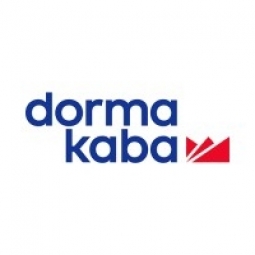公司规模
Large Corporate
地区
- America
国家
- United States
产品
- Axessor IP - Electronic Combination Safe Lock
技术栈
- TCP/IP network
- AES encryption
实施规模
- Enterprise-wide Deployment
影响指标
- Cost Savings
- Productivity Improvements
技术
- 网络安全和隐私 - 网络安全
适用行业
- 金融与保险
适用功能
- 商业运营
用例
- 网络安全
- 远程资产管理
服务
- 系统集成
- 软件设计与工程服务
关于客户
加州 Logix 联邦信用合作社成立于 1937 年,前身是洛克希德飞机雇员联邦信用合作社。自 1937 年以来,它一直保持着完美的盈利记录,被存款账户评为 A+,在美国 200 家最健康信用合作社报告中排名第 38 位。Logix 还获得了 Bauer Financial 的 5 星财务实力评级。此外,它连续两年入选《福布斯》信用合作社“全州最佳”榜单。该信用合作社在加州设有 17 个分支机构,为其成员提供一系列银行解决方案,例如各种储蓄和支票账户、贷款、投资、保险等等。
挑战
加利福尼亚州的 Logix Federal Credit Union 面临着传统代码管理系统的挑战。该系统要求将代码密封在信封中并发送到信用社总部。如果员工需要在分支机构之间流动,他或她将需要多个分支机构的代码。当员工离职时,锁必须由锁匠手动重新编程以删除员工的代码。这个过程不仅成本高昂,而且降低了安全级别,因为代码在不再分配给员工的锁中处于无效状态。Logix 概述了提高效率和降低成本的几个机会。这些包括减少服务和锁匠费用、从各个分支机构经理那里取消锁用户管理、允许每个位置的每个锁有更多用户以及通过 Logix 安全团队集中锁管理。
解决方案
Axessor IP 电子密码安全锁是 Logix 所面临的挑战的解决方案。该锁集成了最新的技术进步,符合所有公认的安全标准。与 USB 版本相比,支持 IP 的 Axessor® 锁提供了更广泛的功能和可选扩展,即用于连接到 TCP/IP 网络的 eBox,用于集中控制所有锁。联网可轻松实现资源优化管理和监控无限数量的锁。广泛使用的 AES 标准使用远程 SDK 或 AS284 软件加密所有网络通信。使用 eBox,可提供五个额外的输入和输出端口。Axessor IP 可高效地远程管理多达 40 个用户代码,访问锁状态并执行多达 10,000 个审计事件,并通过带有电池备份的网络电缆供电。
运营影响
数量效益

Case Study missing?
Start adding your own!
Register with your work email and create a new case study profile for your business.
相关案例.

Case Study
Real-time In-vehicle Monitoring
The telematic solution provides this vital premium-adjusting information. The solution also helps detect and deter vehicle or trailer theft – as soon as a theft occurs, monitoring personnel can alert the appropriate authorities, providing an exact location.“With more and more insurance companies and major fleet operators interested in monitoring driver behaviour on the grounds of road safety, efficient logistics and costs, the market for this type of device and associated e-business services is growing rapidly within Italy and the rest of Europe,” says Franco.“The insurance companies are especially interested in the pay-per-use and pay-as-you-drive applications while other organisations employ the technology for road user charging.”“One million vehicles in Italy currently carry such devices and forecasts indicate that the European market will increase tenfold by 2014.However, for our technology to work effectively, we needed a highly reliable wireless data network to carry the information between the vehicles and monitoring stations.”

Case Study
Safety First with Folksam
The competitiveness of the car insurance market is driving UBI growth as a means for insurance companies to differentiate their customer propositions as well as improving operational efficiency. An insurance model - usage-based insurance ("UBI") - offers possibilities for insurers to do more efficient market segmentation and accurate risk assessment and pricing. Insurers require an IoT solution for the purpose of data collection and performance analysis

Case Study
Smooth Transition to Energy Savings
The building was equipped with four end-of-life Trane water cooled chillers, located in the basement. Johnson Controls installed four York water cooled centrifugal chillers with unit mounted variable speed drives and a total installed cooling capacity of 6,8 MW. Each chiller has a capacity of 1,6 MW (variable to 1.9MW depending upon condenser water temperatures). Johnson Controls needed to design the equipment in such way that it would fit the dimensional constraints of the existing plant area and plant access route but also the specific performance requirements of the client. Morgan Stanley required the chiller plant to match the building load profile, turn down to match the low load requirement when needed and provide an improvement in the Energy Efficiency Ratio across the entire operating range. Other requirements were a reduction in the chiller noise level to improve the working environment in the plant room and a wide operating envelope coupled with intelligent controls to allow possible variation in both flow rate and temperature. The latter was needed to leverage increased capacity from a reduced number of machines during the different installation phases and allow future enhancement to a variable primary flow system.

Case Study
Automated Pallet Labeling Solution for SPR Packaging
SPR Packaging, an American supplier of packaging solutions, was in search of an automated pallet labeling solution that could meet their immediate and future needs. They aimed to equip their lines with automatic printer applicators, but also required a solution that could interface with their accounting software. The challenge was to find a system that could read a 2D code on pallets at the stretch wrapper, track the pallet, and flag any pallets with unread barcodes for inspection. The pallets could be single or double stacked, and the system needed to be able to differentiate between the two. SPR Packaging sought a system integrator with extensive experience in advanced printing and tracking solutions to provide a complete traceability system.

Case Study
Transforming insurance pricing while improving driver safety
The Internet of Things (IoT) is revolutionizing the car insurance industry on a scale not seen since the introduction of the car itself. For decades, premiums have been calculated using proxy-based risk assessment models and historical data. Today, a growing number of innovative companies such as Quebec-based Industrielle Alliance are moving to usage-based insurance (UBI) models, driven by the advancement of telematics technologies and smart tracking devices.
Case Study
Enhancing Security and Compliance in Remitly's Global Money Transfer Service with Fastly
Remitly, an online remittance service, was faced with the challenge of securing its proprietary global transfer network. The company needed a security solution that could meet PCI requirements and protect customers' sensitive transactions through its mobile application. The solution had to be capable of defending against new and emerging attack types without impacting performance. Remitly also had to deal with irregular traffic patterns, such as a sudden spike in account transfers from a small network segment on the Pacific coastline of South America. The company needed to determine in real time whether such traffic indicated an attack or valid requests. A traditional web application firewall (WAF) would not be able to distinguish this traffic, potentially leading to customer frustration if the IP was blacklisted.






